Pärnu - Winner 2019
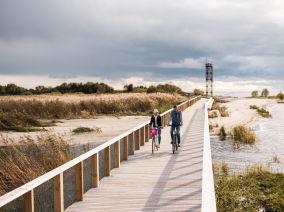
Winner in the ‘Health and wellbeing tourism’ category
Pärnu with its rich resort heritage has a lot to offer - natural sand beaches and enjoyable spas, award-winning restaurants and cafés, wonderful greenery and vibrant events, stunning golf courses and a renowned racetrack, tennis courses and surf centres. Venture outside of town to find pure nature, a coast full of islets, bog trails and two national parks.
Pärnu has everything you need for a truly varied holiday.
What makes Pärnu special
Pärnu is one of the most versatile travel destinations in Europe. In Pärnu you can find functionalist resort architecture masterpieces, romantic wooden villas, 9 excellent spas and wellness centres, beaches, national parks and the truly unique Kihnu island, a couple of hours by ferry from Pärnu. The latter’s cultural space was accorded UNESCO’s title of Masterpiece of the Oral and Intangible Heritage of Humanity. Pärnu´s attractions are plentiful and diverse, catering to every taste.
Health and wellbeing tourism
Pärnu is Estonia’s only wellness tourism destination. The coastal beach-laden county of Pärnu is comprised of the whole Pärnumaa region with town and rural nature areas – altogether it makes a wonderful Estonian-style wellness destination.
There are 9 high quality spas and wellness centres – most of them developed in recent years. Local honey, mud, peat, mineral water, herbs, wax and seaweed are used in spas and beauty salons for treatments. The village of Häädemeeste has restored its production of mineral water. There are 6 different types of mineral waters to choose from.
Pärnu takes health and wealth seriously. The Pärnu College of the University of Tartu even offers a Master’s degree in International Wellness and Spa Service Design and Management, developing new wellness-related services each year.
Most of the Pärnu area is remote, away from big cities – even main town Pärnu is cut off from plane and train connections at the moment.
Health and wellness services in Pärnu are based on local resources and traditions combined with ancestral know-how. Come and enjoy quality spa-services combined with nature activities in the surrounding area.
Sightseeing tips
- Soomaa National Park, well known for its fifth high-water season when, in addition to traversing Soomaa’s hiking trails, canoe and kayak enthusiasts can paddle right through the forest for indelible views.
- Matsalu National Park, one of Europe’s largest migratory bird parks, attracts tens of thousands of birds and over 270 species annually.
- Estonian architectural landmarks, including Pärnu Rannahoone, Rannahotell, Ammende Villa and the Tallinn Gate, the Baltic States’ only extant 17th century moat gate.
More information
- The official Pärnu website
- EDEN video about Pärnu - Winner 2019
- EDEN contact for Pärnu: hando
 parnumaa [dot] ee (hando[at]parnumaa[dot]ee)
parnumaa [dot] ee (hando[at]parnumaa[dot]ee)
Hiiumaa - Winner 2015
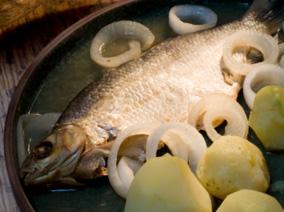
Winner in the Tourism and Local Gastronomy category
Hiiumaa is the second largest island in Estonia and welcomes you with its modest ways. It is a place where people and nature exist together in harmony and it is part of the UNESCO biosphere program 'Man and the Biosphere'. 70% of Hiiumaa is covered with forest and it is home to a wide variety of wildlife and landscape types, fresh water and clean air.
The island of Hiiumaa is surrounded by warm, shallow seas, and boasts some of the best sandy beaches in the Nordic region. Hiiumaa is also known as the island of historical lighthouses. Traditionally, Hiiumaa has been the home of sailors and thus has a well-working network of historical and modern harbours.
But beautiful scenery is not the only asset of Hiiumaa - just as noteworthy are the local inhabitants and the gastronomic traditions. In Hiiumaa, people know and are proud of where the food comes from.
What makes Hiiuma special?
The main attraction of Hiiumaa is the Kopu lighthouse, which is the world's oldest continuously working lighthouse. Nicknamed 'Old Fatty', the lighthouse has been in operation for over 500 years. Another important building in Hiiumaa history is Suuremoisa manor house, which is surrounded by tales of ghosts and was the home of the colourful Baron Otto Reinhold Ludwig von Ungern-Sternberg.
An interesting, but unverified, fact about Hiiumaa is that it might be one of the first islands in the world. A powerful meteorite impact formed the 10km round island around 455 million years ago. A crater is still visible on the landscape. The artesian wells in Kardla are remnants from the impact.
Thanks to the inspiring atmosphere, Hiiumaa is home to lots of artists and musicians. During the summer season Hiiumaa turns into a cozy festival island. Distinctive art events, a garfish festival, summer plays, small, but high-level music festivals, the Kardla Horse Days, Hiiu Folk and Hiiumaa Cafe Days are examples of events visitors can experience.
Sightseeing tips
-
B e adventurous and make a tour of the island by bicycle. Try the Lighthouse Tour, where you have the chance to visit 3 magnificent lighthouses.
-
Have a day under the sails - go sailing on the historical wooden ship 'Lisette'.
-
If you want to know more about the island's troubled history, take a guided tour to discover the remains from both world wars and get a glimpse of life behind the 'Iron Curtain'.
-
E njoy local food in the small harbours around Hiiumaa. The tastes and the sea breeze could just make you want to stay a little bit longer.
More information
- The official website of Hiiuma
- EDEN video about Hiiumaa
- EDEN contact for Hiiumaa: hiiumaa
 visitestonia [dot] com (hiiumaa[at]visitestonia[dot]com)
visitestonia [dot] com (hiiumaa[at]visitestonia[dot]com)
Haapsalu - Winner 2013
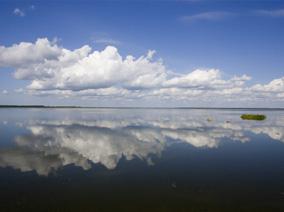
Winner in the Accessible Tourism category
Haapsalu is a small, romantic seaside town situated on the west coast of Estonia.
It is famous for its historic and maritime atmosphere, warm sea water, curative mud baths and friendly residents.
The oldest part of Haapsalu is built on a strip of land that was formed of many islets only a few hundred years ago. Narrow streets lined with wooden houses that have not changed much since the beginning of the 20th century bring you back to the sea again and again. Haapsalu has therefore been called the Nordic Venice.
But above all, Haapsalu is a town for people. Over 700 years old, it offers self-contained peace and quiet, but also an eventful summer season has become Haapsalu's trade mark.
Accessibility
The town is known for its therapeutic mud, discovered in the 19th century. However, it also has a long history of hosting people with disabilities.
Haapsalu is a compact town, and everything you need is within reach. But if needed, taxis and buses are adapted to the needs of disabled people.
There are accessible sports - Haapsalu Water Centre has a special lift, which provides access to the pool, and wheelchair users can play tennis or go bowling.
Haapsalu Cultural Centre and most museums are also accessible by wheelchair, and a variety of cultural events are on offer.
Sightseeing tips
- Walk through the romantic streets of the city.
- Relax with mud therapy.
- Visit the Estonian islands.
More information:
- The official website of Haapsalu
- See the EDEN video about Haapsalu:
- Long version (3 minutes)
- Short version (1 minute)
- EDEN contact for Haapsalu: jane
 visithaapsalu [dot] com (jane[at]visithaapsalu[dot]com)
visithaapsalu [dot] com (jane[at]visithaapsalu[dot]com)
Lahemaa National Park Manors - Winner 2011
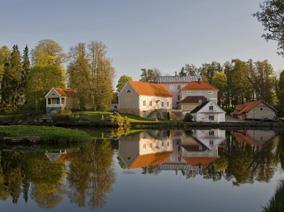
Winner in the Tourism and Regeneration of Physical Sites category
The Lahemaa National Park, in the north of Estonia just 70km away from Tallin, is the largest nature park in the country.
It covers 725km and has a diverse landscape – endless plateaus, coastal plains, several waterfalls, beaches and forests.
Rich and diverse flora and fauna complement the beautiful landscape.
Lahemaa is a perfect place to rest and enjoy the natural environment. In this beautiful setting, you can find three manors – Palmse, Sagadi and Vihula.
Each of the manors is unique, yet all three of them have common features which complement the surroundings.
Regeneration and revival
The 20th century was a rather challenging era for the manors. Economic decline and nationalisation led to their misuse and subsequent decay.
Fortunately, in the last few decades a lot has been done to restore the historical beauty of the complex.
Palmse was the first of the three to be completely renovated and was developed into an open-air museum, hosting events like music concerts, wine tasting and traditional food festivals.
Sagadi house is now home to the Nature School and the Forest Museum. Hiking trails of different lengths offer walking opportunities and there are also guided excursions to the forest from the house. Visitors to the house can learn about the natural heritage of the region.
Vihula is now a luxury holiday and eco-spa resort, offering an array of body treatments using local herbs. It is a perfect escape from the bustling life of the city.
Extensive collaborative efforts between the tourism authorities and local entrepreneurs have ensured a diverse holiday package, which offers guided tours, excursions, spa packages and other programmes catering for every visitor.
Sightseeing tips
- Taste local wines at the Palmse Manor. There are tasting sessions in the wine cellars.
- Visit the Forest Museum at Sagadi Manor, a former granary and carriage house. Here you can see more about the history of the region.
- Why not go on a Viking long-ship adventure in Kasmu and learn about the history and traditions of the Vikings?
- Board a long-ship and listen to sailors tell their stories. It's a great experience for anyone interested in history.
More information
- The official websites for the Lahemaa National Park Manors:
- Watch the EDEN video about the Lahemaa National Park:
- Long version (3 minutes)
- Short version (1 minute)
- EDEN contact for the Lahemaa National Park: monikasooneste
 hot [dot] ee (monikasooneste[at]hot[dot]ee)
hot [dot] ee (monikasooneste[at]hot[dot]ee)
Lake Vortsjarv - Winner 2010
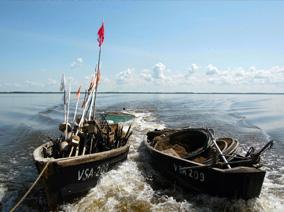
Winner in the Aquatic Tourism category
Located in southern Estonia, Lake Vortsjarv is the second largest lake in the Baltic States.
The lake is not only a natural habitat for a number of flora and fauna, but also a home, an employer, a rest area, a subject for research, a history keeper and watercraft carrier.
Lake Vortsjarv has a great recreational value as well as considerable fishery and navigational importance.
The beauty of Vortsjarv and its surrounding nature has attracted visitors throughout the ages, offering possibilities for activity holidays and for spending free time.
According to legend, Vortsjarv was a sacred lake. Oak and maple forests on the shores were full of fairies, pixies, witches and wizards. Ancestral traditions are an important part of the cultural life of the people in the Vortsjarv area.
What makes Lake Vortsjarv special?
The Vortsjarv lake, with its abundant fish resources, has throughout the centuries been the means of subsistence for locals.
The natural environment of the lake has left its trace io the culture and history of the region. It is home to ancient fishing villages, and there is even a historical fishing vessel native to the region – the 'kalepurjekas'.
The lake, which is rich in eel, carp, bream and pike-perch, also features Estonia’s only freshwater fish museum.
Don't miss...
- the Lake Museum in Vehendi Village which exhibits rare and protected species in aquariums, as well as a model of the biggest fish ever caught in Vortsjarv.
- the Dutch windmill at Tamme (built in 1875-1899) used to serve as a convenient navigation landmark for fishermen.
More information
- The official website for Lake Vortsjarv
- See the EDEN video about Lake Vortsjarv:
- Long version (3 minutes)
- Short version (1 minute)
- EDEN contact for Lake Vortsjarv: jaanika
 vortsjarv [dot] ee (jaanika[at]vortsjarv[dot]ee)
vortsjarv [dot] ee (jaanika[at]vortsjarv[dot]ee)
Somaa National Park - Winner 2009
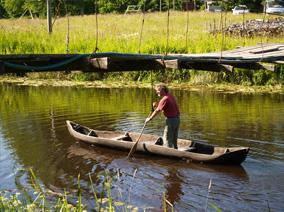
Winner in the Tourism and Protected Areas category
Only after visiting this region can an outsider truly understand the so called 'fifth season' and the importance the flooding rivers play in developing the area's natural beauty.
The fifth season (a name coined by the locals) is a time of majestic flooding in the Soomaa National Park. The floods are essential for the continued development of the park's ancient bogs.
A must-see is the Kuresoo Bog, one of the best surviving large bogs in Estonia. Almost 200 species call the bog home and its effect on the area is unparalleled.
In the winter there are snowshoe tours over the bogs and frozen rivers, while in the other seasons night-time canoe tours are available. There is even a beaver safari available for lovers of the outdoors.
Local accommodation is plentiful in Vijandy. Don't miss the traditional Estonian food served at Sookolli Soogituba (Ogre's Dining Room).
What makes the Soomaa National Park special?
Soomaa is an ecosystem like no other.
Surrounding the massive maze of bogs are magnificent meadows and forests. In June, the meadows are filled with Siberian Iris and their radiant blue color
For wildlife enthusiasts, the region is home to over 185 different types of birds, such as cranes and the Ural owl. In addition, carnivorous animals such as lynx, wolves and brown bears roam the lands.
The Soomaa has also played a key role in Estonia's history, by sheltering many antagonists and freedom fighters. Some of the more famous Estonians to call the area home have been writer, politician and teacher, Carl Robert Jakobson, poet Lydia Koidula and composer Mart Saar.
In an area that floods so heavily, the locals understand what life is like being cut off from the outside world. At times a 175 square kilometer region of the park can be flooded with water rising nearly a metre a day for 3-4 days in a row. Roads are completely impassable during the fifth season.
The local municipalities value the isolation the flooding brings and have taken strong measures to protect the lands from intrusion. The types of species are monitored and water levels are recorded to see what effect the different levels have on the ecosystem.
What to look for in...
- Spring: Retreating flood waters give way to blossoming flowers
- Summer: The Kuresoo Bog's thriving ecosystem
- Fall: Scores of wildlife preparing for the impending winter
- Winter: Snow-covered land giving way to looming floods
Highlights of the Soomaa National Park
- The smell of wild orchids in the summer
- Drifting aimlessly down the river in a canoe
- Snowshoeing through powder filled meadows
- Bouncing on a bog
More information
- The official website of Soomaa National Park
- Watch the EDEN video about Soomaa National Park:
- Long version (3 minutes)
- Short version (1 minute)
- EDEN contact for Soomaa National Park: krista
 viljandi [dot] ee (krista[at]viljandi[dot]ee)
viljandi [dot] ee (krista[at]viljandi[dot]ee)
Viljandi - Winner 2008
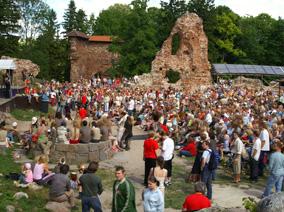
Winner in the Tourism and Local Intangible Heritage category
The town of Viljandi lies in a valley on the shores of Lake Vijlandi, whose many outflowing streams make it a treasure to behold.
While the first records of civilisation in Viljandi date back to the 5th millennium BC, it only became formally established as a commercial centre in the 12th century.
Sometimes called the cultural capital of Estonia, it is Viljandi’s unique location, people, nature and architecture which set it apart. The heritage of the place has been kept vibrant by its people, partly through traditional songs which are seen as a symbol of freedom and independence.
The lake is encircled by a hiking trail with lay-bys for visitors to picnic and light campfires. Many legends surround the lake and are retold in songs. One tells of the boatman of Viljandi who fell hopelessly in love with a blue-eyed girl.
Known for their entrepreneurial spirit, varied cultural and sporting hobbies, the people of Viljandi are considered its greatest asset. The town has a population of 20,000 inhabitants and is the sixth largest in Estonia.
What makes Viljandi special?
Looking over the edge of the Kuresoo bog in Viljandi, visitors can see the highest marsh above sea level in Europe.
Nature trails lead visitors through meadows and forests to some of the most exciting places in the area. There they can learn about the great mysteries of the vast Soomaa National Park which protects the wetlands, meadows and forests.
Regular floods are one of the specific features in Soomaa. Local people call them the fifth season.
Kondas Centre is an arts centre dedicated to naivist art, modern folk art and outsider art. It offers short-term courses for locals and tourists and is responsible for the eight massive strawberry sculptures that decorate the town. The inspiration for them is Paul Kondas’ painting Strawberry Eaters.
Heimtali village is a must-see to pick up some local handcrafts. Fairs are organised there every spring. Famous handcrafts include patterned sweaters, knitted by local women, which are worn by royals.
The Eduard Pohl match factory in Viljandi is in the Guinness Book of Records for making the world’s longest match ever lit.
Historical heritage
On the slopes of the town lie the ruins of an ancient castle. In its wall is a mysterious paw print. By pressing one’s fingertips in this print all honourable wishes will be fulfilled - or so the legend goes.
Archaeological excavation findings are exhibited in the Viljandi museum, which is housed in the old apothecary in the former marketplace. The well in the courtyard seems to be the source of power and rhythm for Viljandi even today.
People gather there for the various festivals – Hanseatic Days, the Ugala Drama Theatre’s open-air performances and the folk music festival.
History is also reflected in the many manor estates – more than 20 have survived to this day. The most perfectly preserved is Olustvere with its magnificent mansion, outbuildings and a verdant park.
An exhibition of wooden horses carved by the local master Voldemar Luht narrates the stories of Estonian history by means of small horse figurines.
Culture and events
Traditional music is an active part of the everyday life of the people.
The Estonian traditional music centre has organised the Viljandi Folk Music Festival since 1993. The festival is well known among the folk music community throughout the world.
More than a hundred concerts with over 400 performers are held in the ruins of Viljandi castle, churches, indoor venues and throughout Viljandi county.
Five open-air and three indoor venues, ten workshops, themed exhibitions, an instrument fair, a handicraft yard, and a fairytale room gather large crowds.
A host of festivals also take place in Viljandi throughout the year.
The early music festival, Hansa Days, a number of dance festivals, and the theatre-in-a-suitcase puppet festival are just a few of these.
During the most popular event – the Viljandi Folk Music Festival – there are so many performers and visitors that the town's population doubles.
Viljandi is one of the five Estonian Hanseatic towns. During the traditional Hanseatic Days, the town is crowded with guests. People walk in the streets wearing historical costumes and concerts and a handicraft fair are held. A real medieval atmosphere is created. Craftsmen offer linen towels, baskets, woollen socks and gloves, honey, and sea buckthorn jam.
Fortune tellers, fire breathers and witch doctors are also present to entertain and enthral.
More information
- The official website of Viljandi
- Watch the EDEN video about Viljandi:
- Long version (3 minutes)
- Short version (1 minute)
- EDEN contact for Viljandi: krista
 viljandi [dot] ee (omeditoud[at]angre[dot]gr)
viljandi [dot] ee (omeditoud[at]angre[dot]gr)
